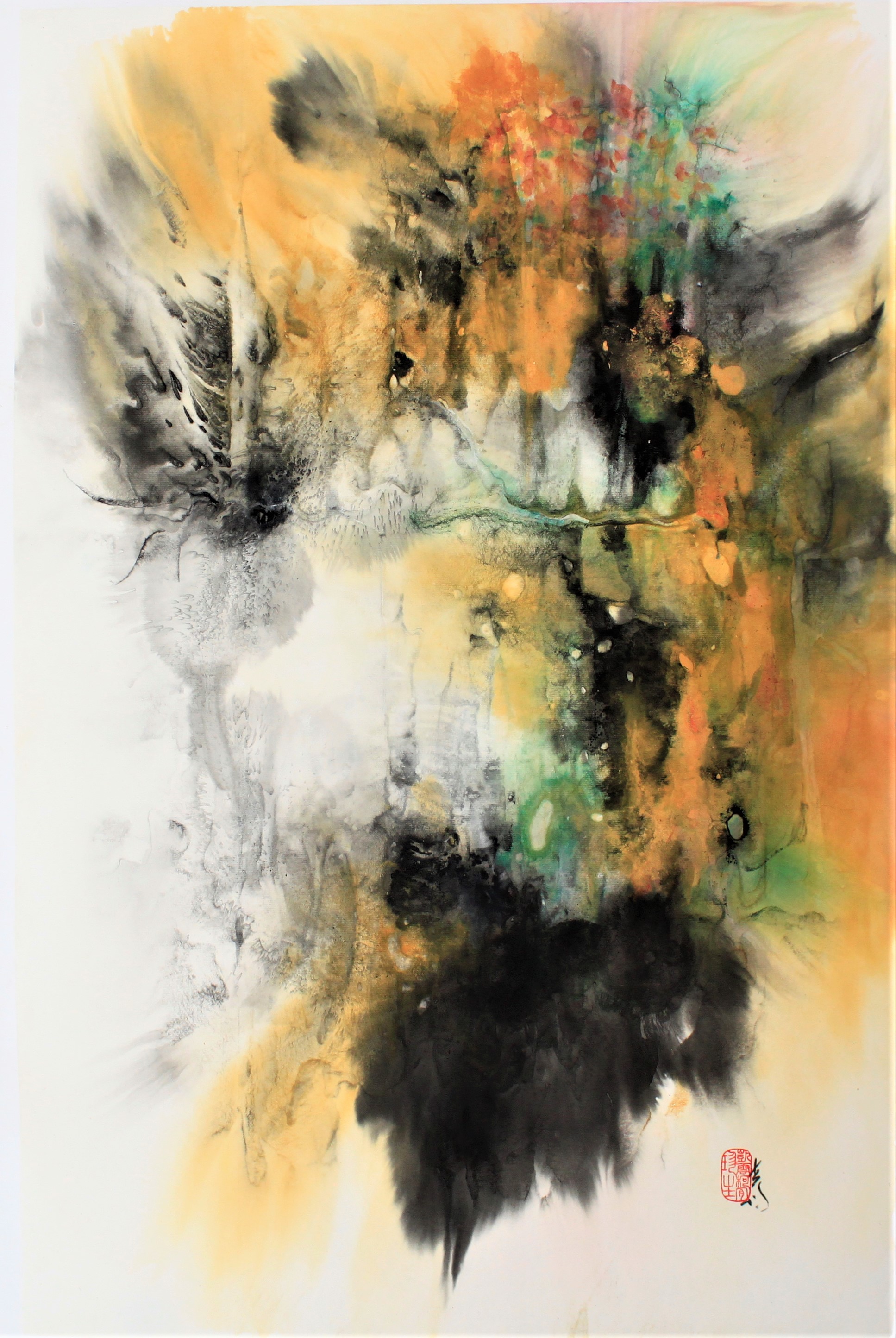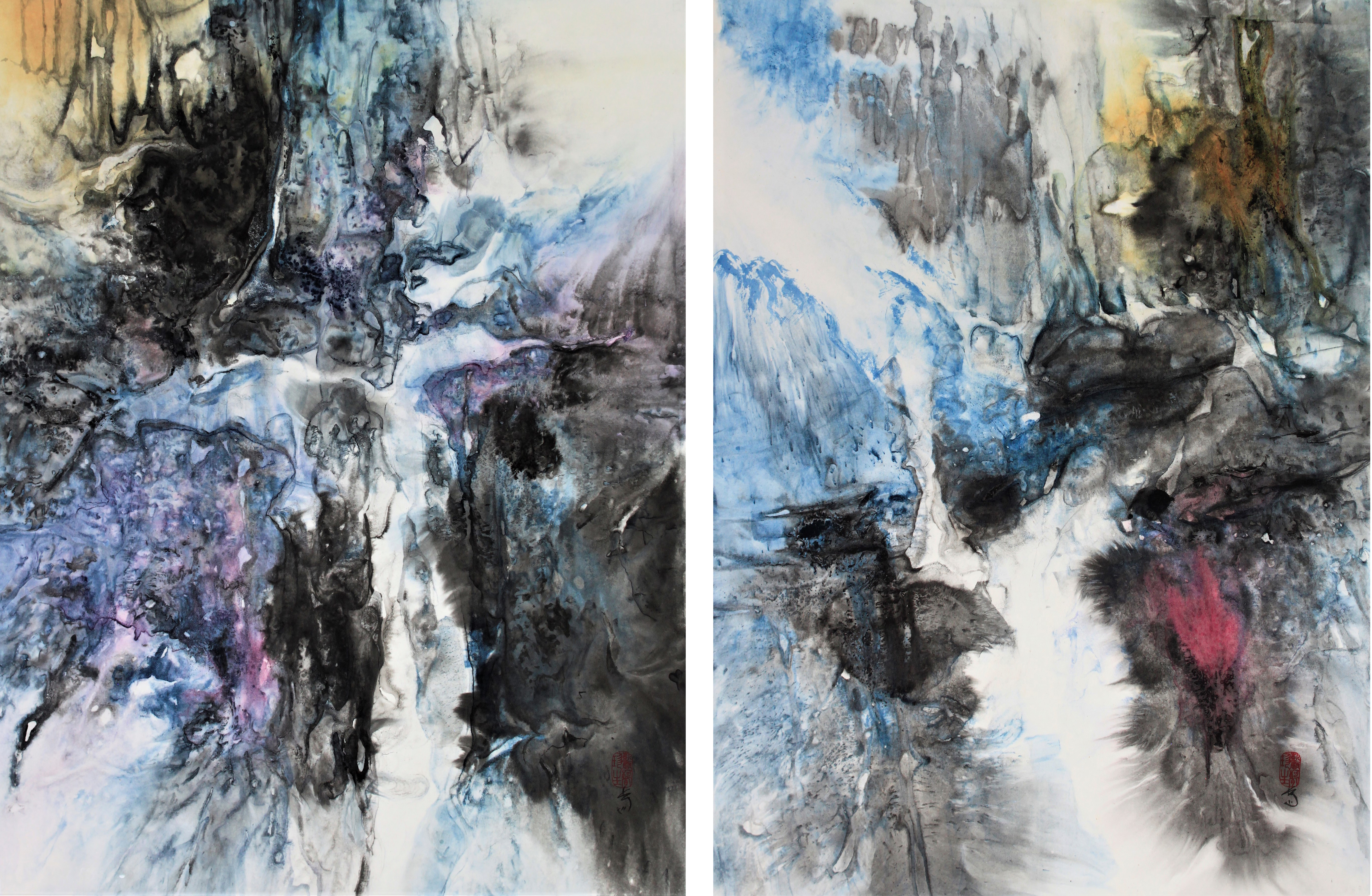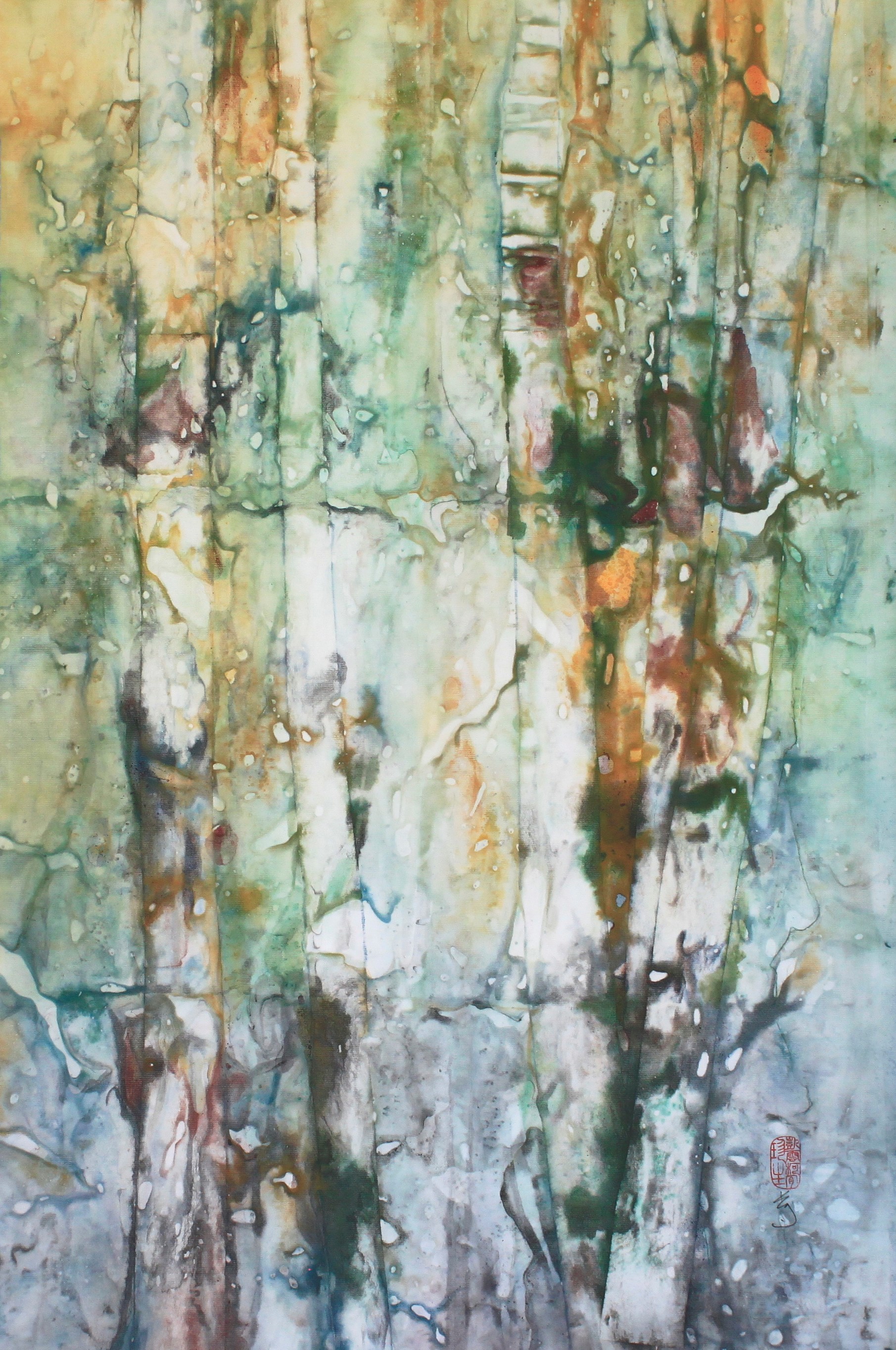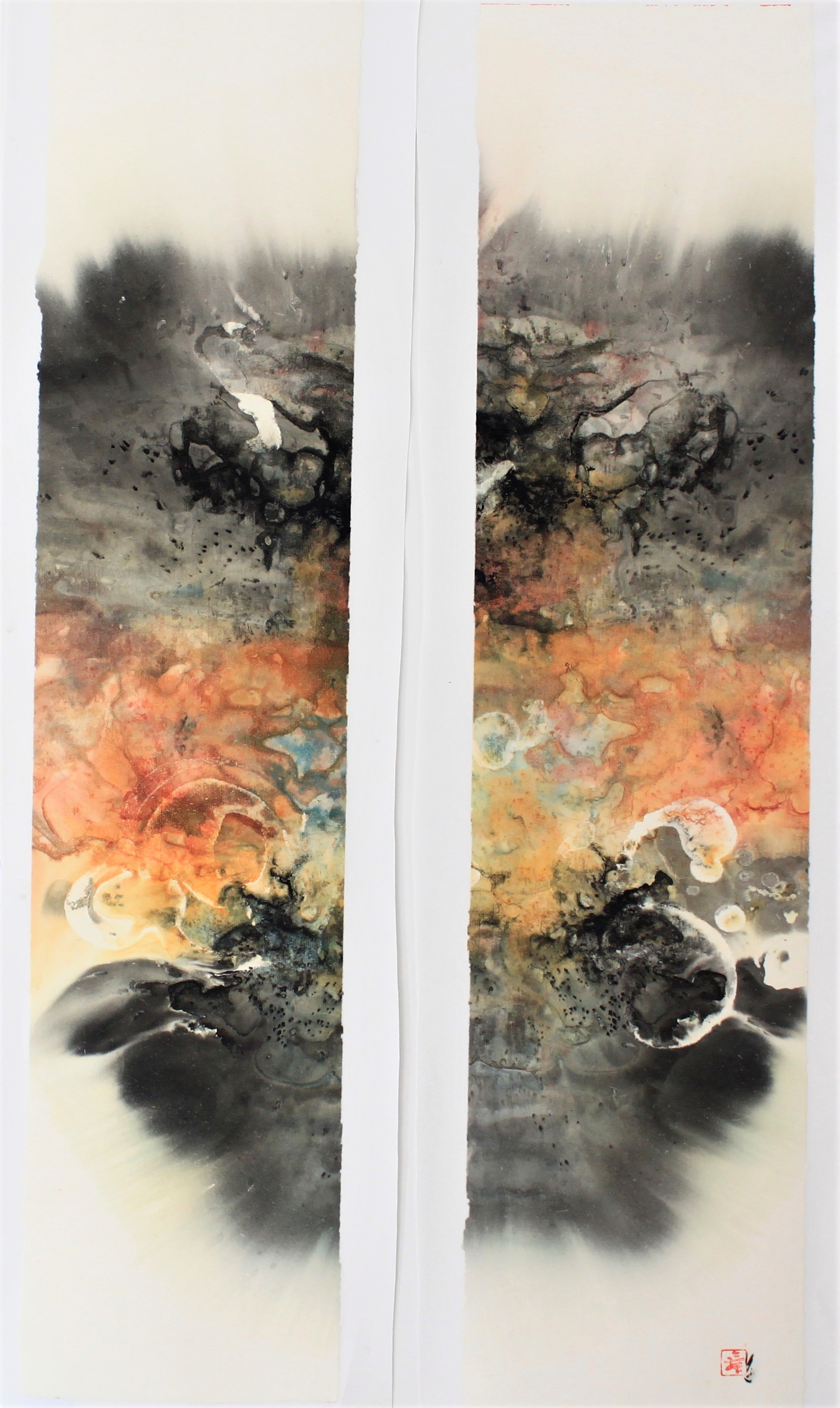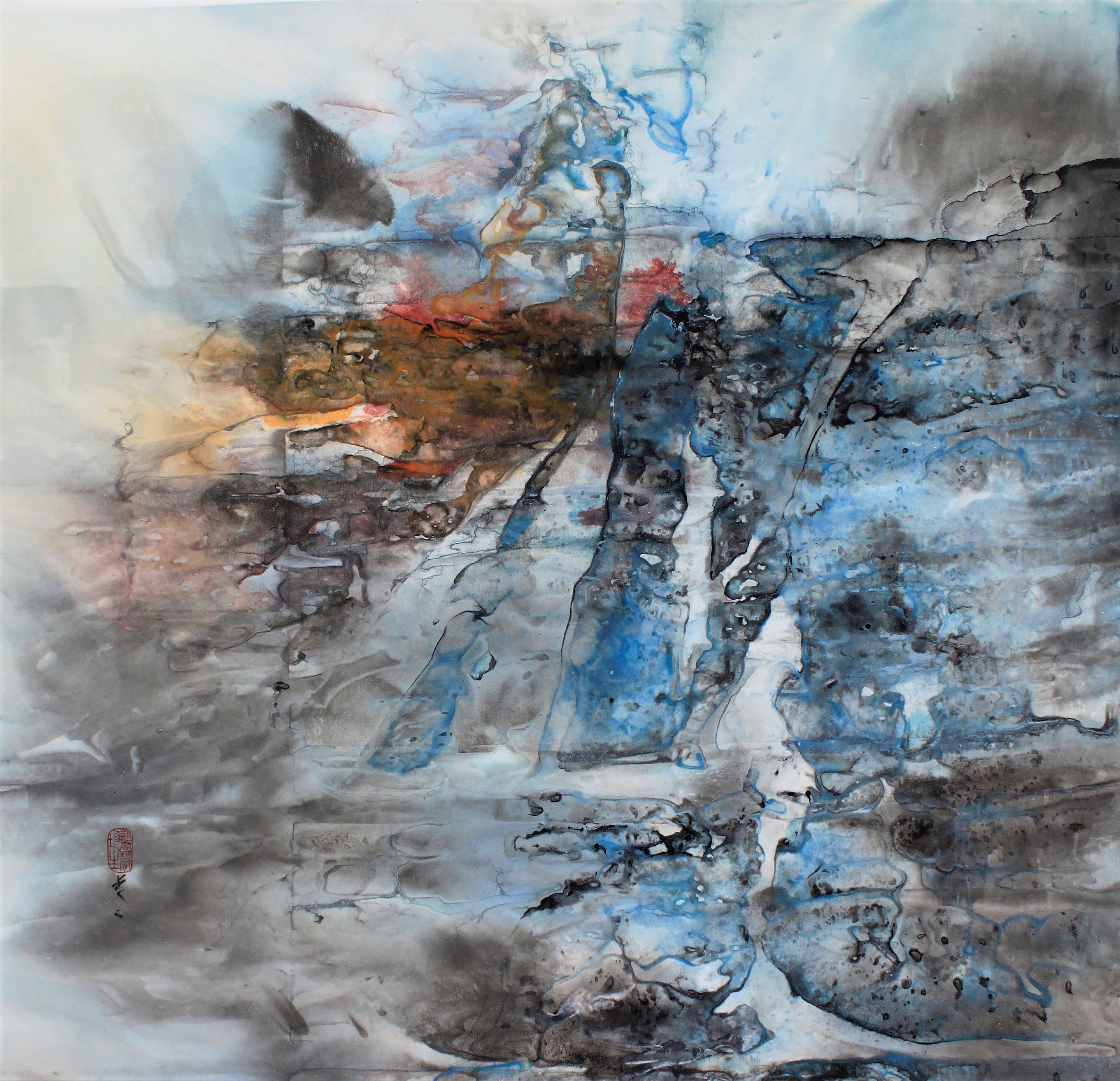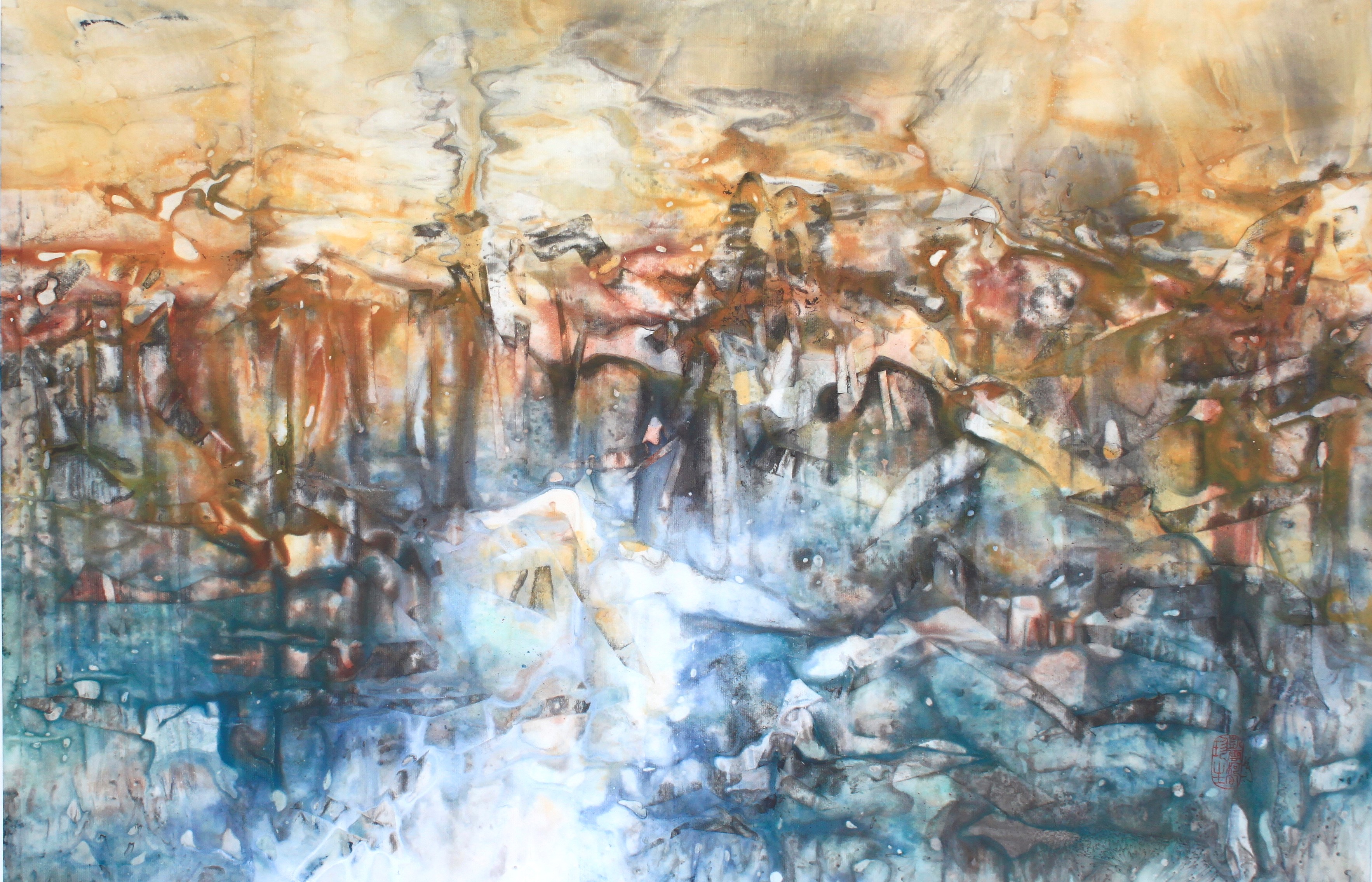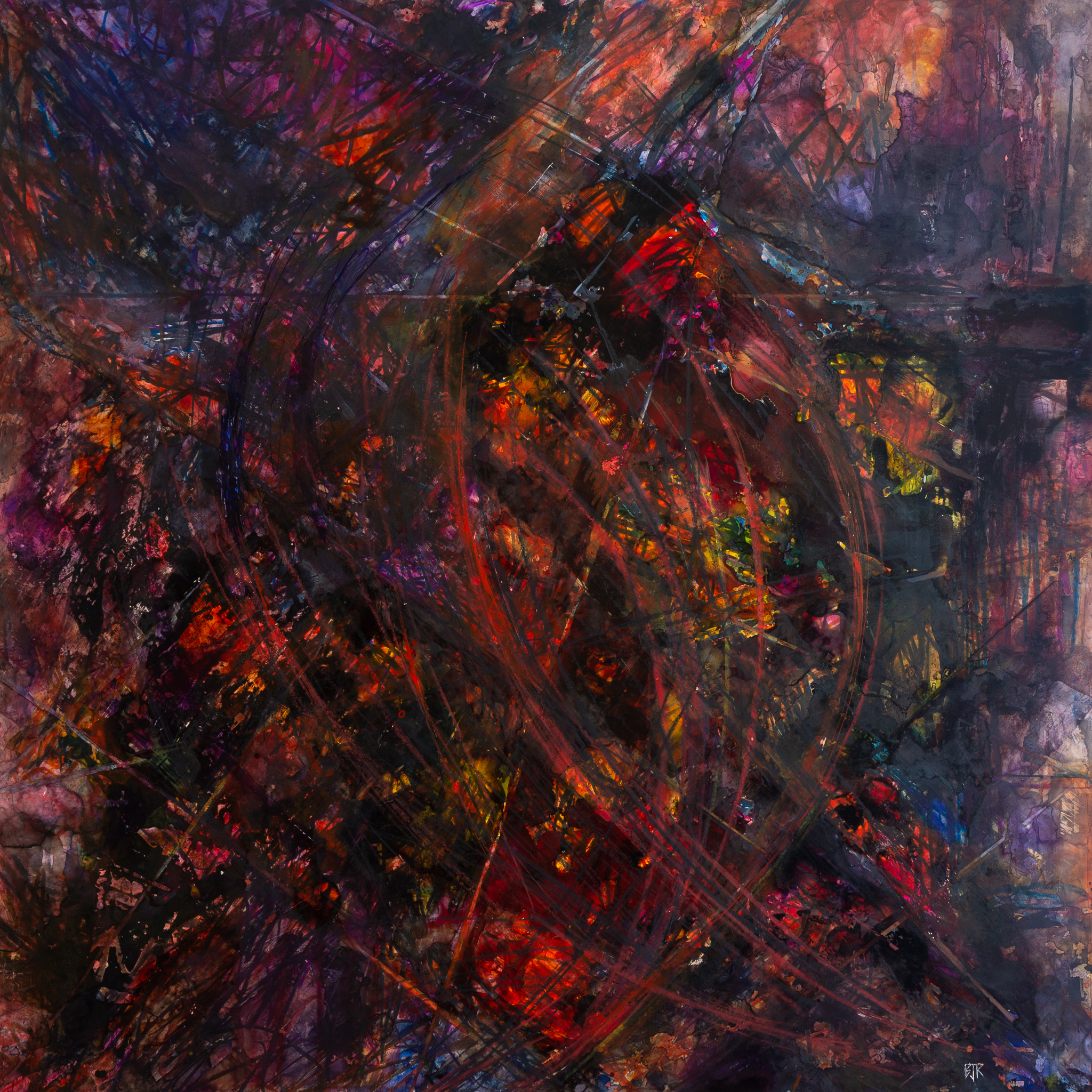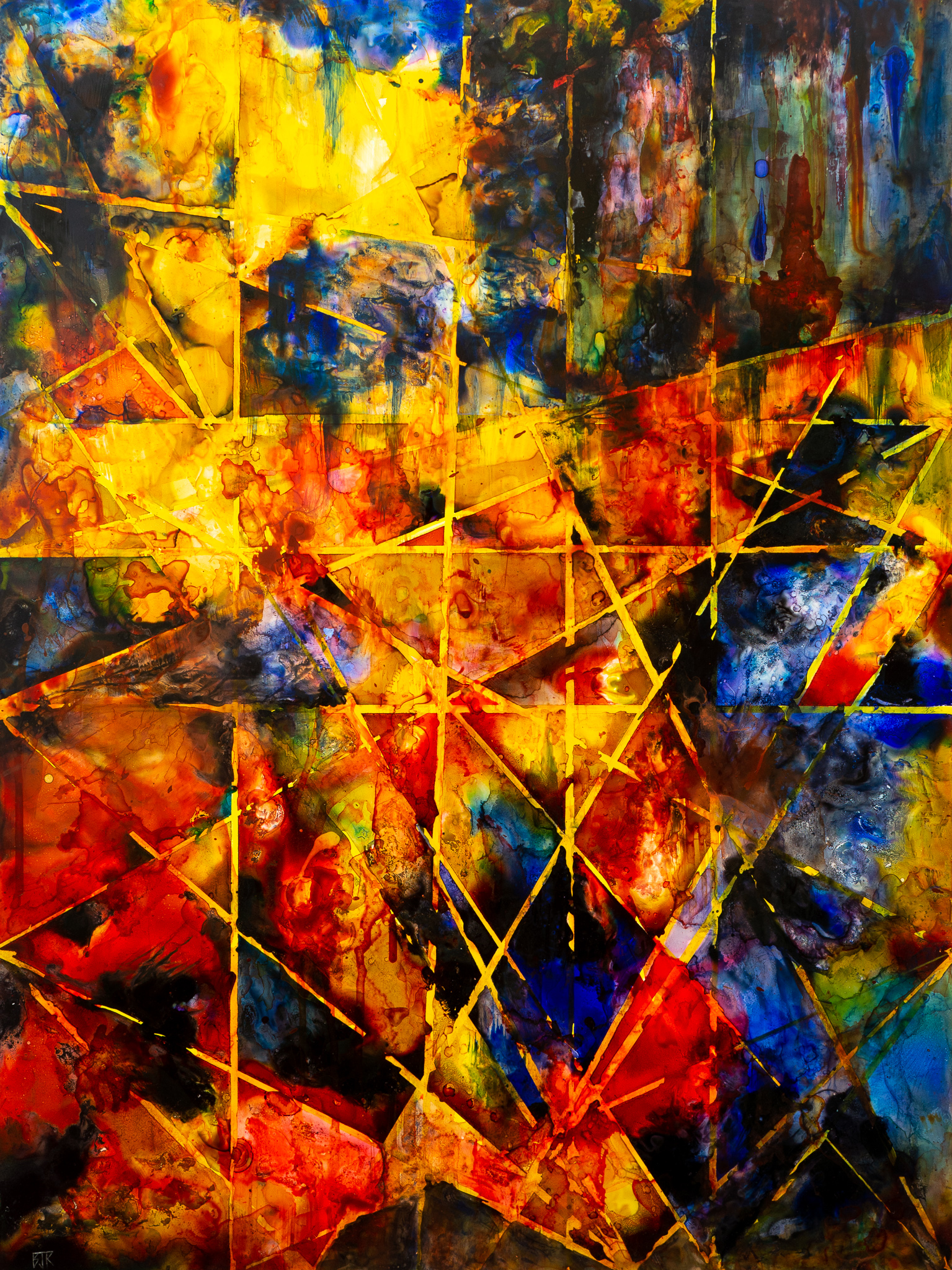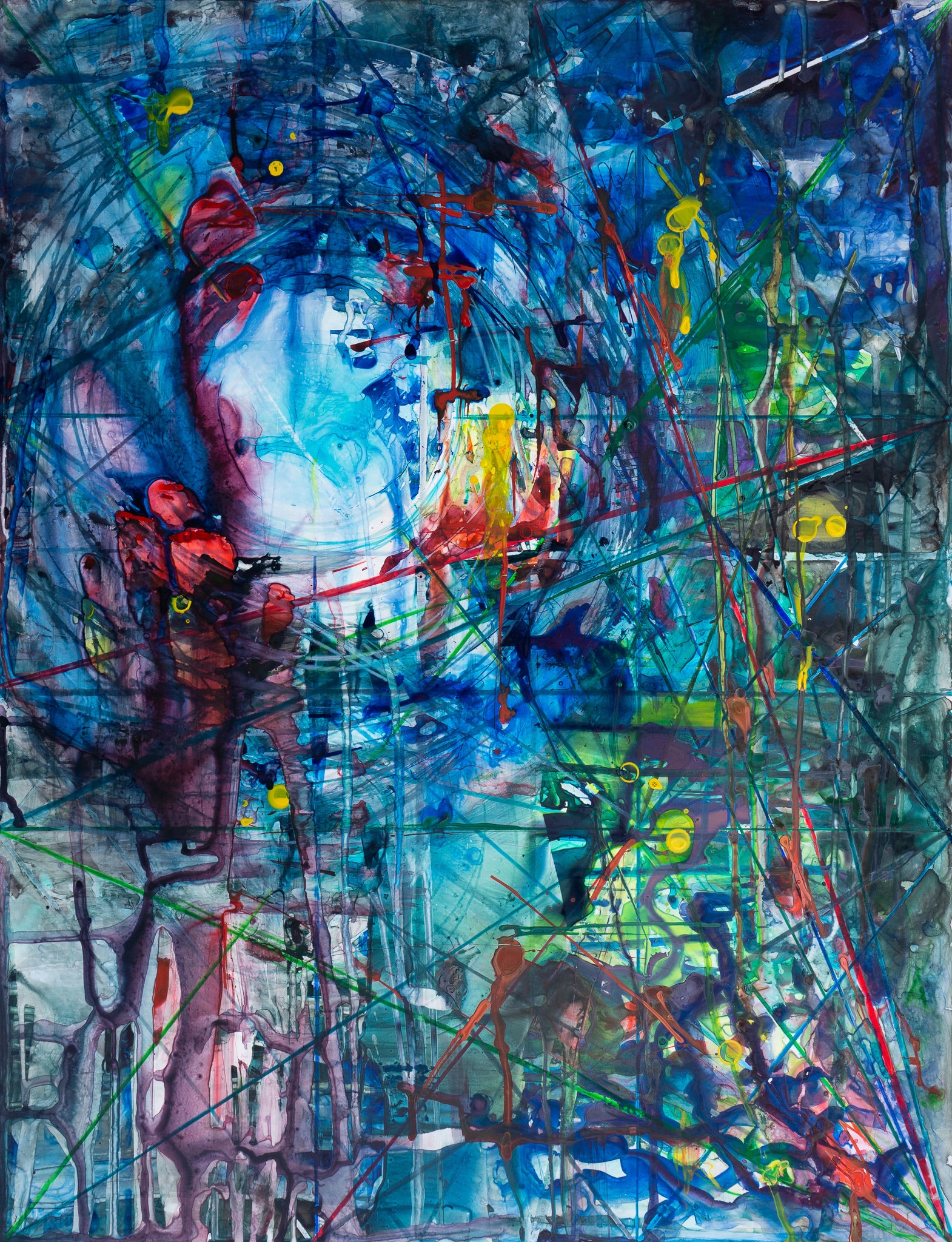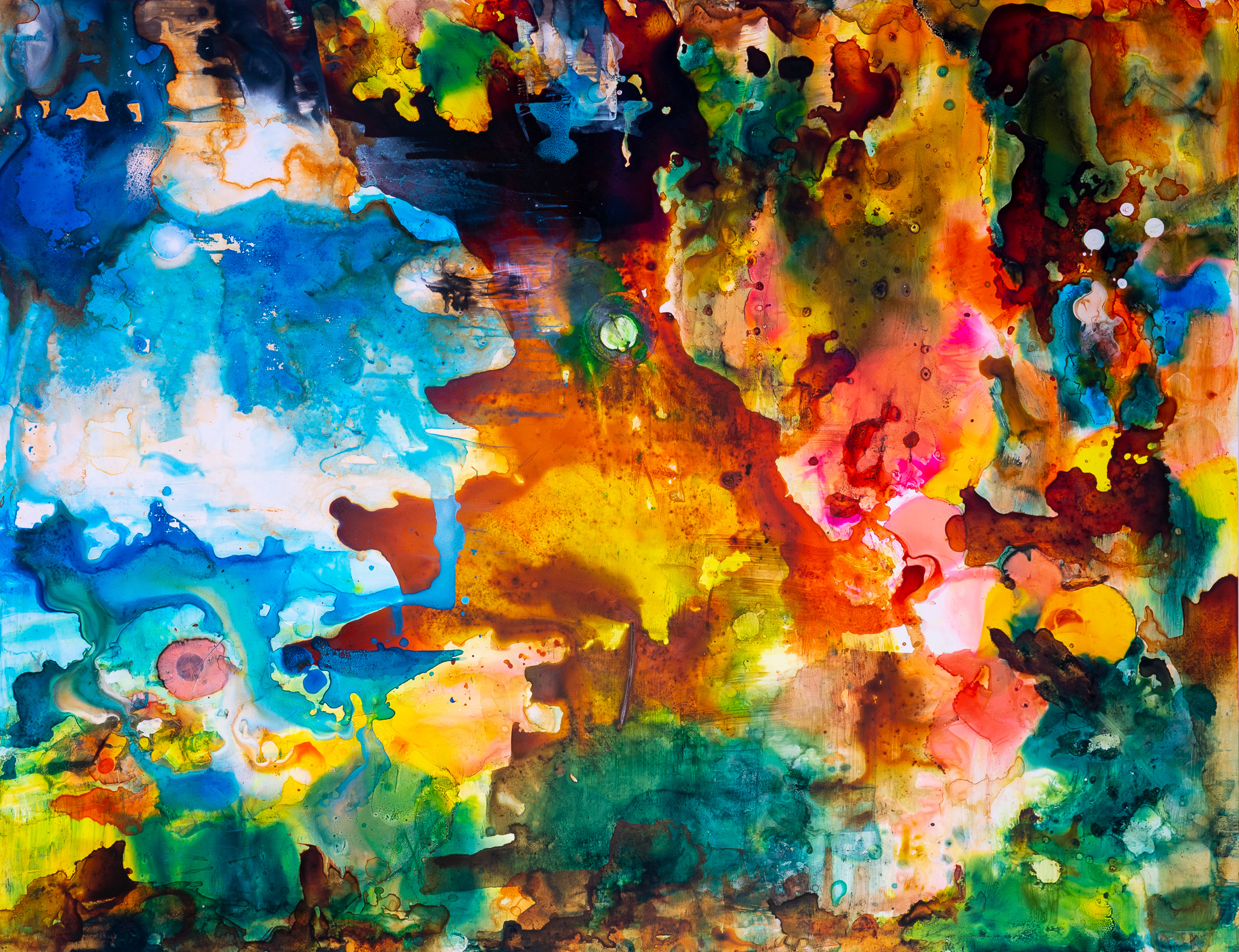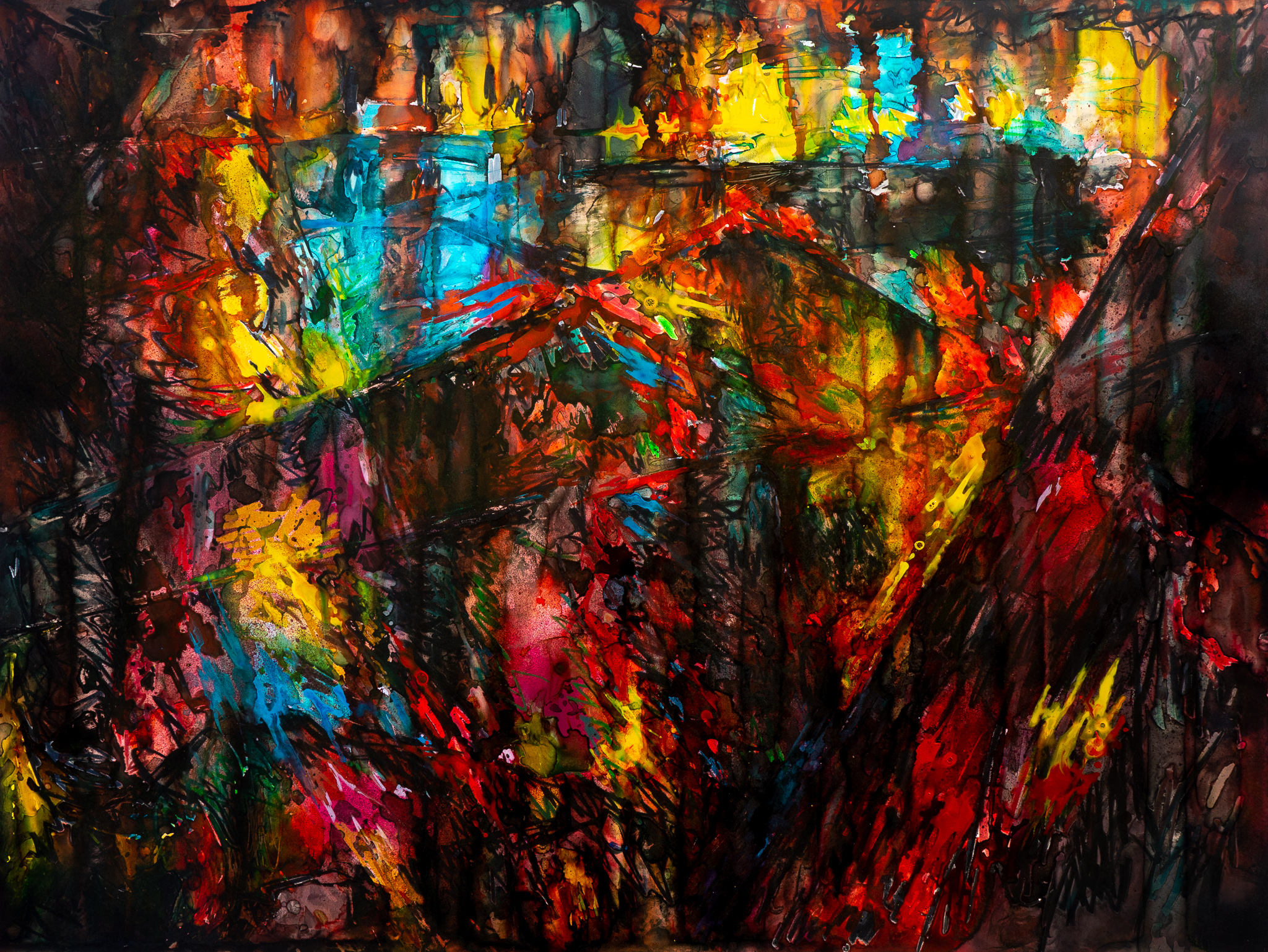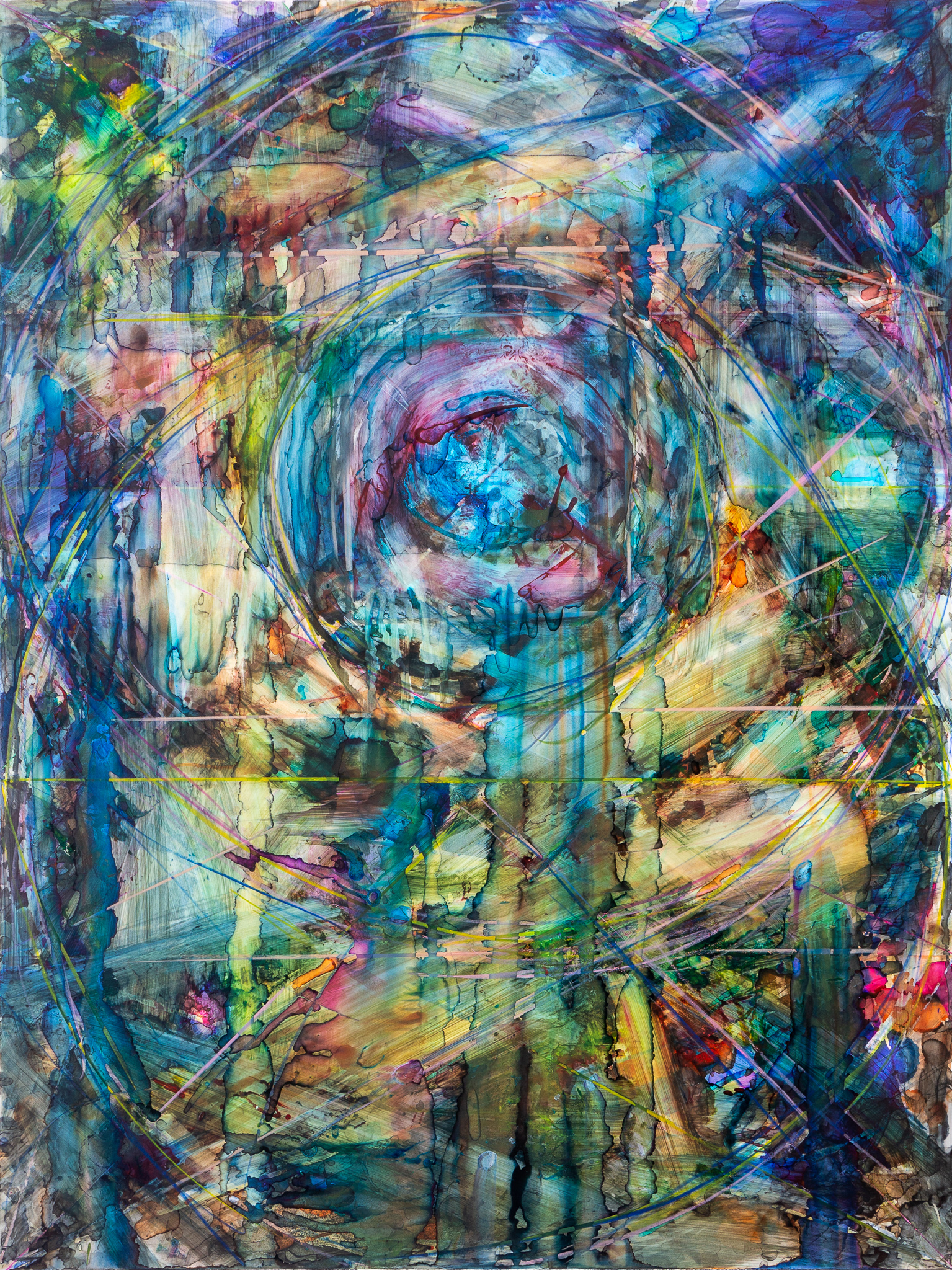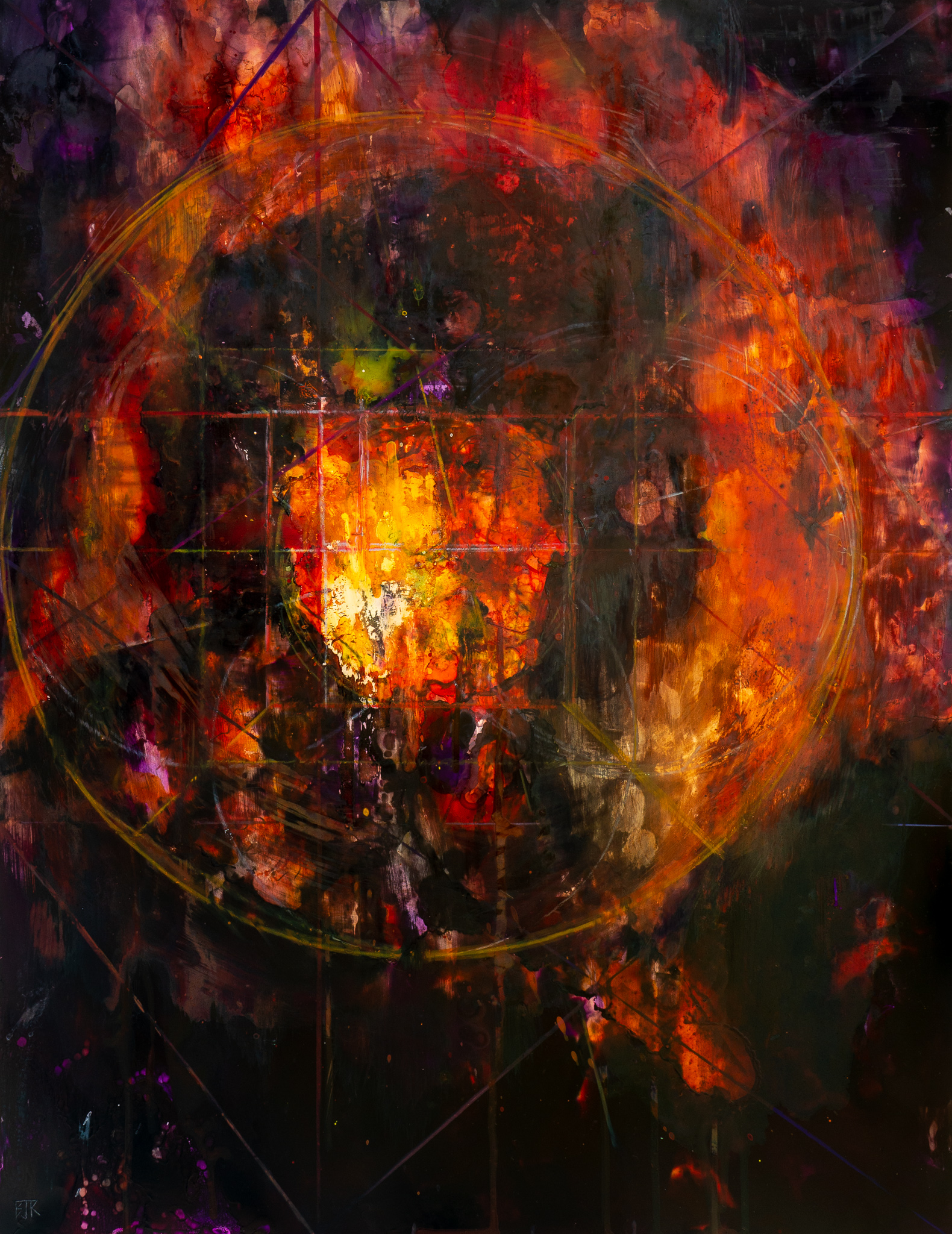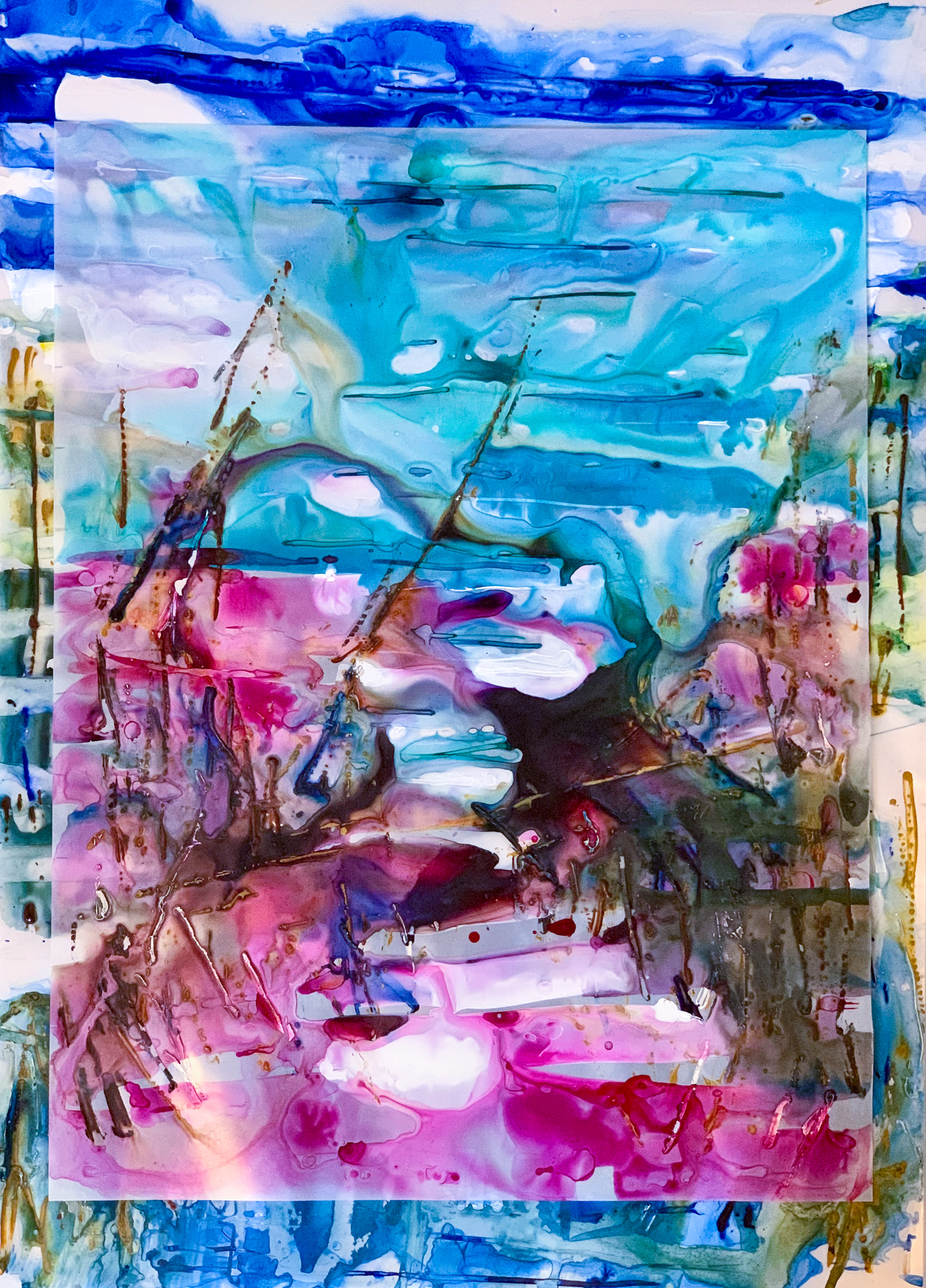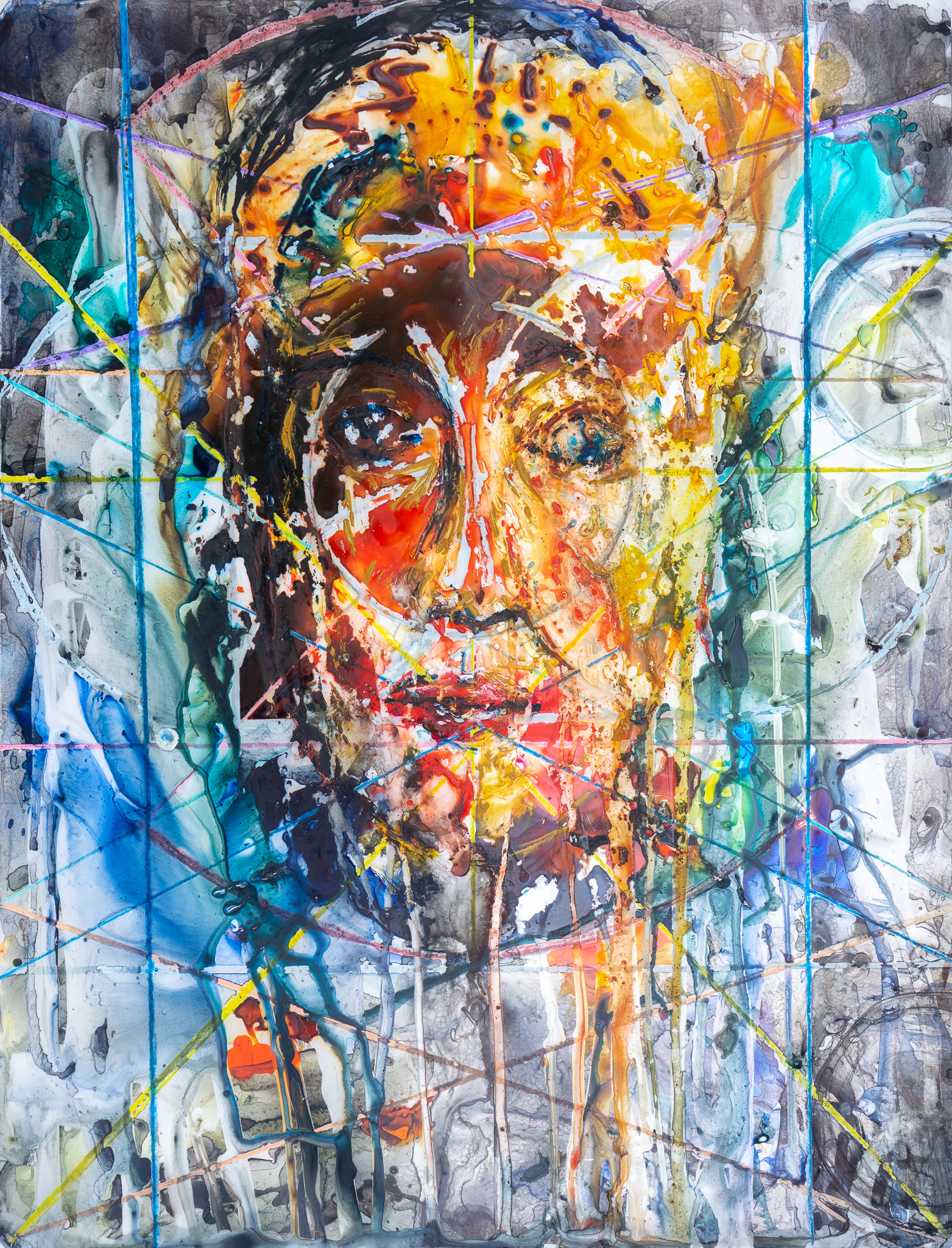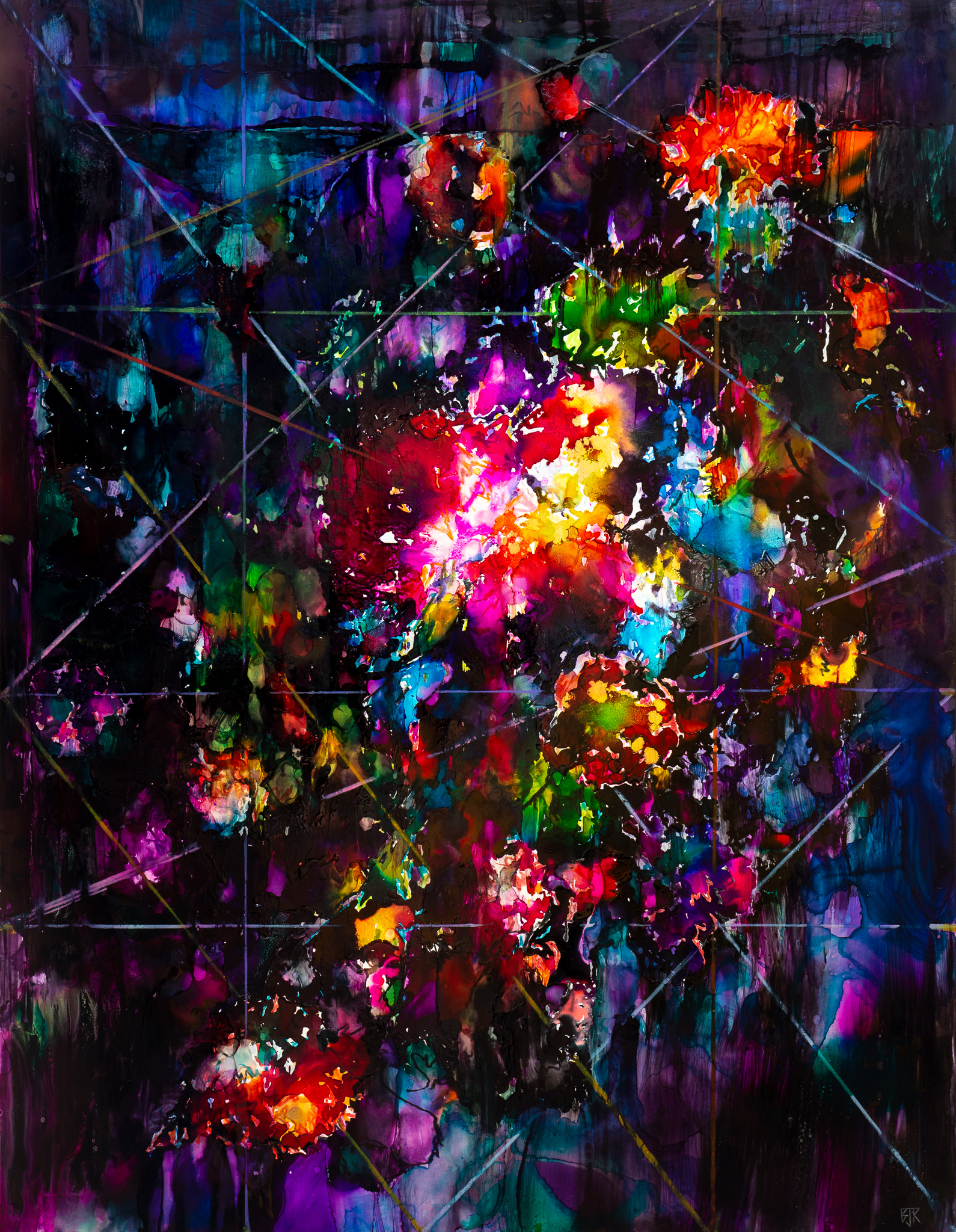
August 22-September 30, 2022. Quiet Power: Karen Kurka Jensen and Brent Rowley
Gallery Director Essay
Jonathan Jones, art critic from the British newspaper The Guardian, might be right. Why is abstraction suddenly the flavor of so many galleries in the US and Europe? He says that the revival of abstract art is what's needed as a response to the violence around us.
Didn't see that coming, did you?
Abstract art didn't actually disappear, though. Early and mid-20th century artists such as Kandinsky and Pollock have always had their followers. And yet there was definitely a time in the late 20th century and early 21st when figurative, not abstract, painting was making an impact. This was, I believe, in part due to the academy where art curricula tended to favor traditional imagery and craftsmanship.
These two artists (of two generations) clearly interpret abstraction in very different ways. And that is, of course, why we are delighted to show their work as the inaugural 2022-2023 academic year exhibit.
Surely the real reason for abstraction's return lies, in part, in politics and history. After 9/11 people rushed to predict a new seriousness, a new kind of reflection, in the arts - missing the point about art in the late 20th century.
Abstract painting in general and these works by Jensen and Rowley are not "escapist". But they do take for granted that reality is strange and opaque, that art can only say something about the modern world if it too is difficult. Perhaps poetry is a better response to these times than propaganda.
Abstract art is needed now because it is a vessel of humanity and sensitivity. It shields us from the lies, pandemics and violence of our age.
Alan Garfield
Director, Bisignano Art Gallery
Quiet Power Exhibit Poster
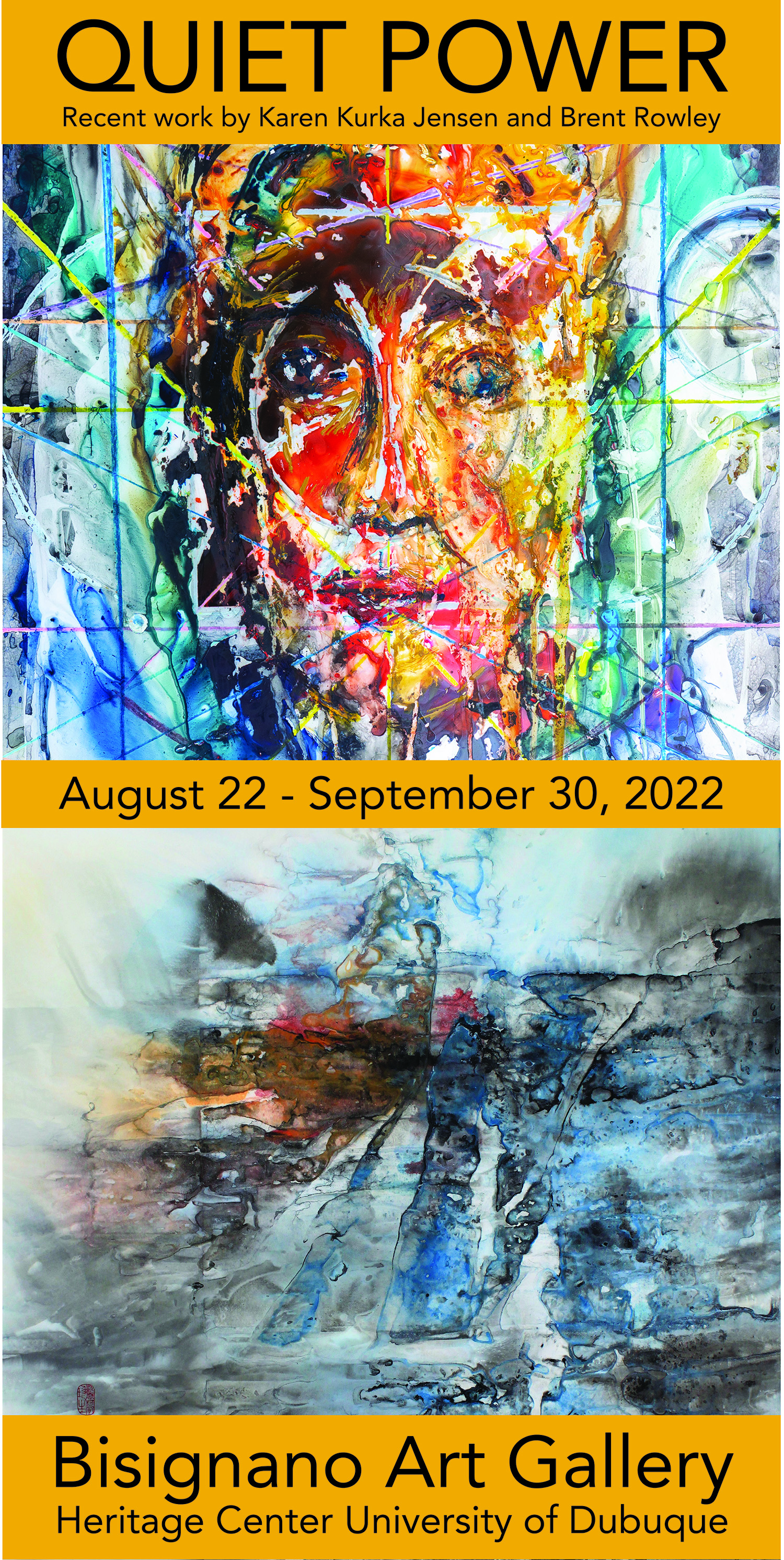
Artist's Statement
My philosophy and passion as an artist derives from my studies of sumi-e and its history, beginning in China where the people have long held that their magnificent culture was a gift from the heavens. Art was primarily a means to explore the connection between humankind and God. Artists cultivated virtue in themselves because they felt that to create art worthy of the divine, there must first be inner beauty. Part of my daily discipline is in waiting. It is dwelling, quiet and solitary. It is prayer. Prayer as the absence of wanting and asking. Prayer as emptiness, prayer as silence, prayer as stillness.
Sometimes I just sit and look. I look at the majesty of the sky, all the amazing drama, its moods, shapes and colors. Or I look at water, the shifting surface, reflecting, revealing, hiding, disclosing. One minute, still and peaceful, showing me the secrets of its depths; the next, rippling with the breath of an oncoming storm when all images are swept away. I let these things be, I simply dwell in this presence. It‘s where I’ve always felt closest to God. I receive the moment and embrace it, finding in nature, peace and healing.
John Muir wrote,“Going to the woods is going home.“ My abstract landscapes are taking the viewer on a similar journey – away, to mystical worlds where you can get lost and feel at home in the same breath. When I discovered the medium of sumi-e, where the importance is on connecting spiritually to your subject, I found the language of my soul.
Artist's Statement
The goal of my art is to express the tension between stability and transience.
To this end, I employ traditional compositional frameworks from diverse historical aesthetic traditions—Indian mandalas, medieval geometries, Renaissance harmonies — in abstracted ways stripped of historical narratives. Through spontaneous and accidental mark-making techniques, I seek to push these traditional compositions to their breaking points.
The success or failure of a piece depends on both the adherence to form and the rebellion against it. My art is engaged with the historicity of artistic creation, resurrecting tradition at the same time as it deconstructs it. The past is seen through a fragmentary and distorted lens, a lens which also reveals a present that is perhaps strange and new to us.
